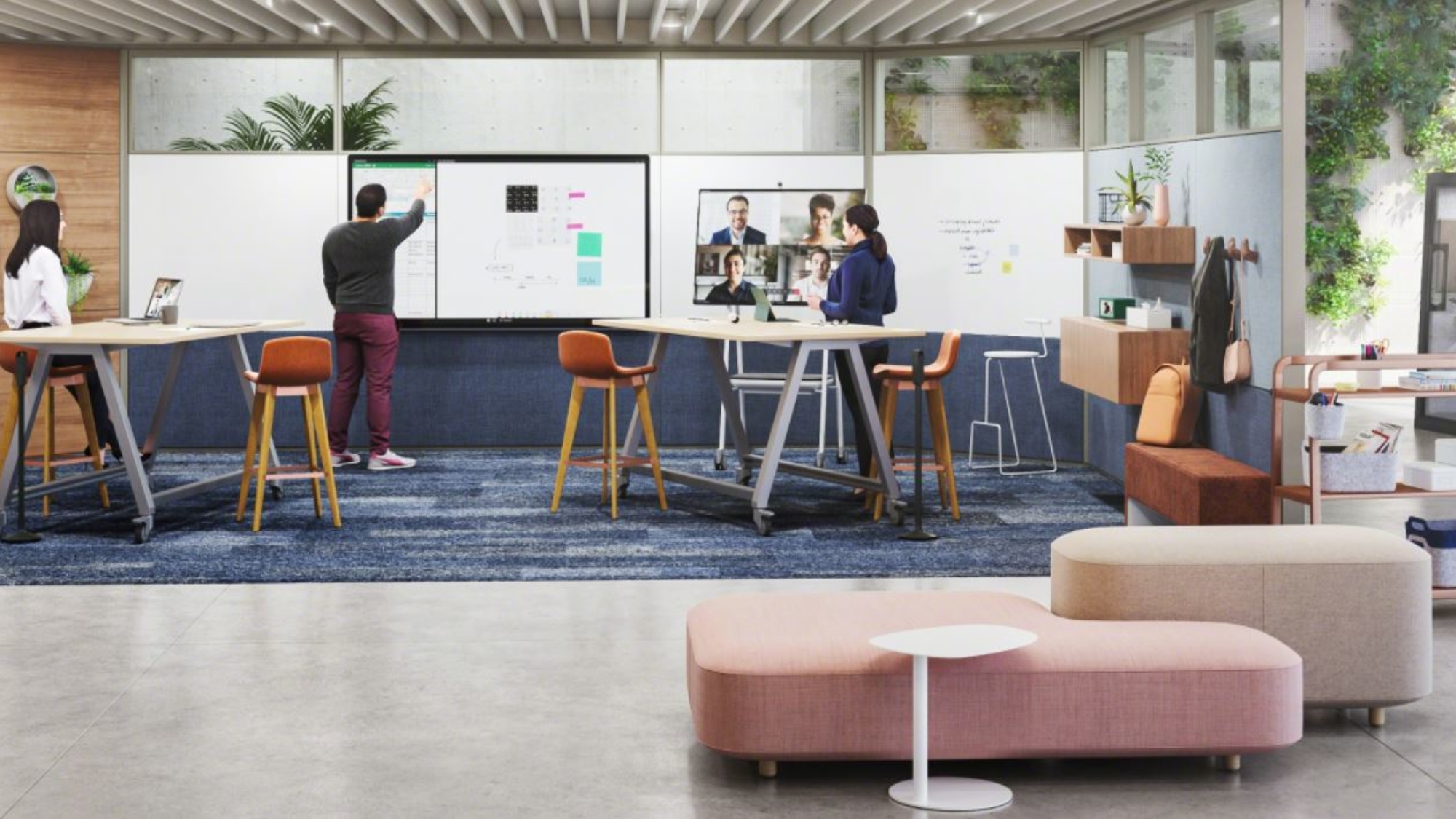The future of the workplace is hybrid and so is the future of collaboration. Sixty-eight percent of global organizations are planning to experiment with hybrid work. They are allowing employees to work partly in the office and partly at home or elsewhere to varying degrees. Even companies who will primarily be in the office will encounter hybrid work — some partners, suppliers and customers will expect to connect over distance — and that means people will be collaborating with a blend of remote and co-located teammates more than ever before.
Leading organizations are taking steps now to prepare for a significant increase in hybrid collaboration, as more people return to the office, so they can be as productive as possible. These organizations recognize how much they need the energy and vibe that drive innovation and growth, but understand if people struggle, they will retreat to their homes.
Hybrid Collaboration Is Complex
“Starting now, every space is a video space. People are spending so much time adjusting camera angles, and figuring out content streams, they are losing the human connection and we need to make things easier,” says Jessie Storey, Steelcase design manager who’s been working on improving the hybrid experience for 15 years. The problems people faced pre-pandemic will only accelerate and masks and distancing won’t help, notes Storey. Issues people will struggle with are:
Inequitable environment – When remote teammates can’t see or hear, they have to work harder to be involved. The root cause of that presence disparity is the poor integration of physical space and digital tools.
Complex connections – It’s tough to read body language, make eye contact and sense the group’s mood over video.
Failing to engage – It’s hard to share content in a way that engages both in-person and remote participants. Can remote teammates see if someone is using a markerboard?
Inhibiting innovation – Generating new ideas is the most difficult type of collaboration. Being active can help people be more engaged and creative — that’s tough on video.
A Hybrid Future + BYOD
As organizations test new ways of working some variables will remain in flux. For example, how many people will participate on both ends of a video call, how will employees own and share different types of collaboration spaces, and what hardware and software platforms will stick.

Other shifts are more certain — like a hybrid future and a BYOD (bring your own device) model. BYOD relies more heavily on workers’ mobile devices instead of completely integrated, dedicated room systems. By supporting and integrating a variety of hardware and software solutions, people can connect in the easiest and most productive ways for them.
Range of Spaces + Technology
To create the best possible hybrid work experience, organizations will want to offer a range of spaces and technology solutions to easily support diverse types of collaboration — from a planned creative session to an impromptu one-on-one and everything in between. “We need to focus on braiding the digital and the physical,” says Storey. “It’s not enough to just bring remote people into the space. We need to give those in the office a better virtual presence by designing important elements like cameras, acoustics, content and lighting.
“It’s not enough to just bring remote people into the space. We need to give those in the office a better virtual presence.”
Receive our Newsletter
To receive our newsletter, including new editions of spaces and other digital content, fill out the form below:



